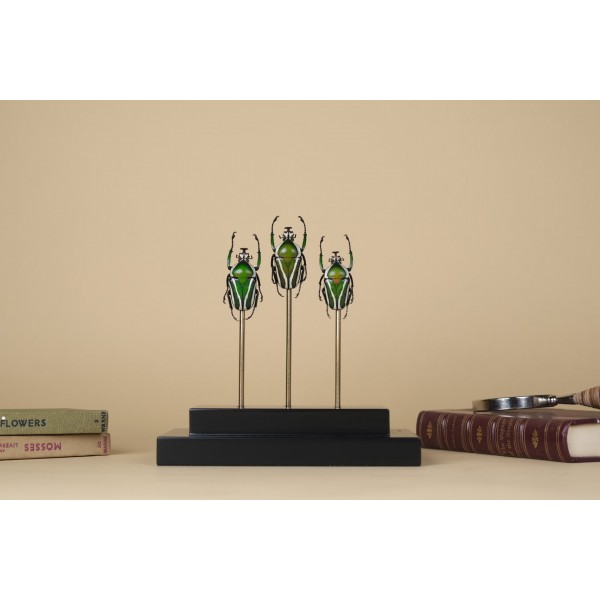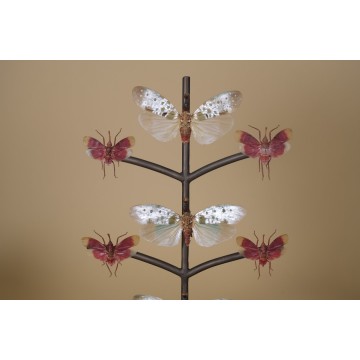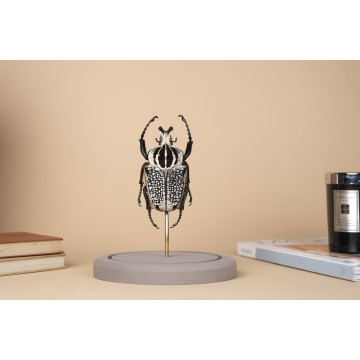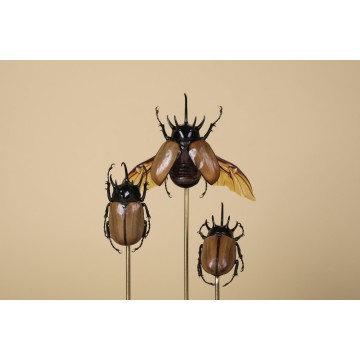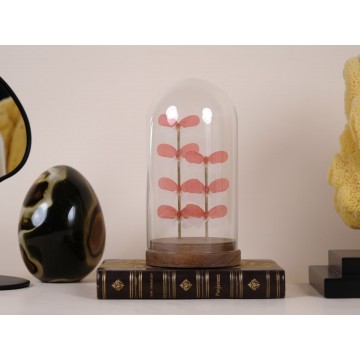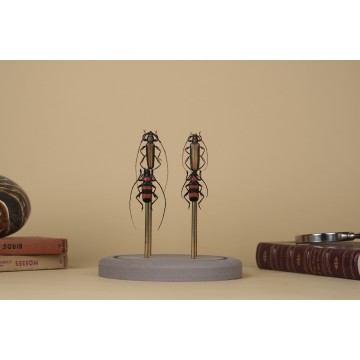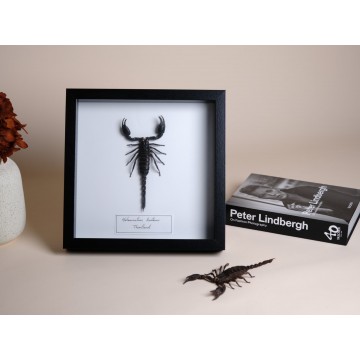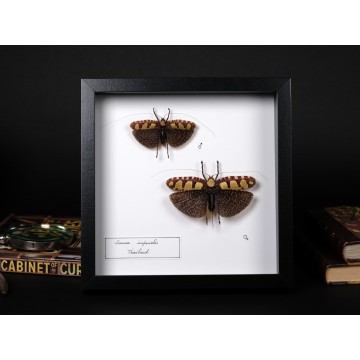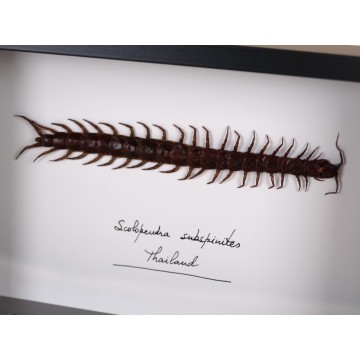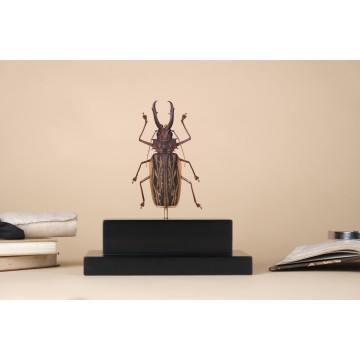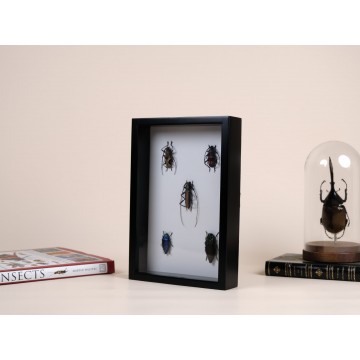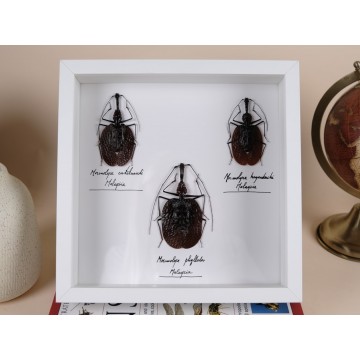Fulgoridae Glass Vitrine
Delicate and beautiful, this glass vitrine showcases an exquisite collection of Pyrops specimens from the Fulgoridae family, closely related to Cicadas. These insects are unique, each featuring a long cephalic extension used to pierce the fruits they feed on. The vitrine includes four Red Lam Pyrops hamdjahi from Indonesia, three Pyrops clavatus from Thailand, and two Pyrops astarte from Thailand, all elegantly mounted on a handmade dark brass support frame. The vitrine and base are also handcrafted, making this a truly one-of-a-kind display piece.


